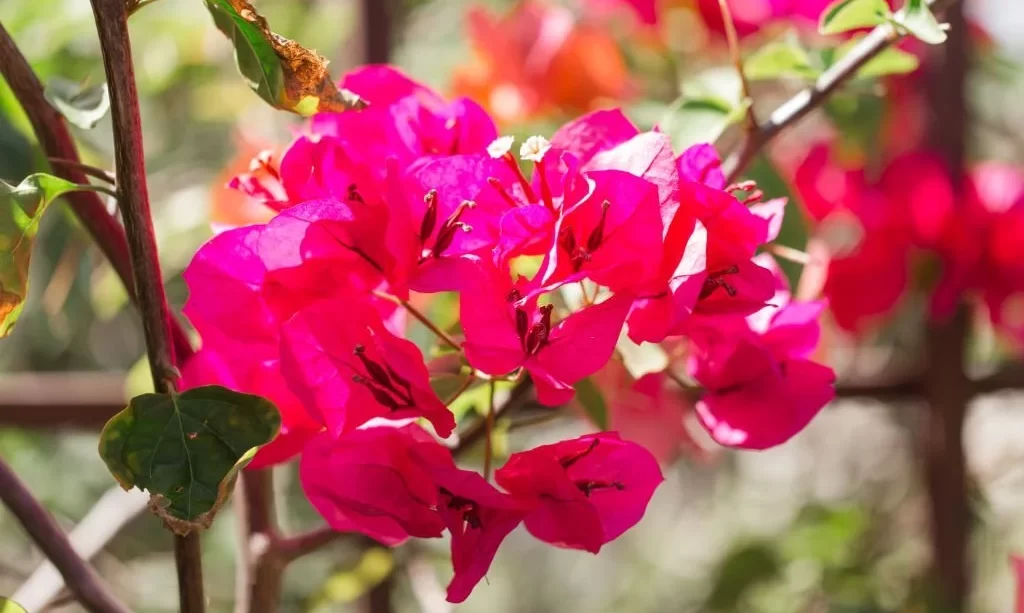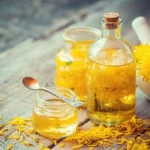Bougainvillea, with its dazzling burst of colorful bracts, has captured the hearts of gardeners and enthusiasts around the world. This vibrant and ornate flowering plant is often a centerpiece in gardens, landscapes, and even as potted specimens on balconies. Amidst the allure of its captivating beauty, one common question frequently arises: Does bougainvillea have thorns? In this exploration, we embark on a journey to uncover the truth about bougainvillea and its thorny reputation. While this plant is celebrated for its flamboyant display, the presence of thorns, or lack thereof, holds a key place in the curiosity of those who admire it. Join us as we peel back the petals to reveal the nature of bougainvillea and its intriguing characteristics.
Bougainvillea Overview
Before delving into the question of thorns, let’s acquaint ourselves with the enchanting world of bougainvillea:
- Scientific Name: Bougainvillea spp.
- Origins: Bougainvillea is native to tropical and subtropical regions, including South America, particularly Brazil.
- Appearance: The defining feature of bougainvillea is its stunning bracts, which are modified leaves that surround the plant’s small, often inconspicuous flowers. These bracts come in a kaleidoscope of colors, including shades of pink, purple, red, orange, and white, creating a visual spectacle that delights the eye.
- Climbing and Trailing Habit: Bougainvillea is known for its climbing or trailing growth habit, making it a favorite for adding vertical interest to gardens, arbors, and walls. It can also be trained into various shapes and forms.
- Longevity: When provided with proper care, bougainvillea can thrive for many years, gracing gardens with its brilliant display season after season.
As we venture deeper into the world of bougainvillea, we will address the often perplexing question of whether this captivating plant is armed with thorns or if there’s more to its structure than meets the eye.
Appearance of Bougainvillea
Bougainvillea’s appearance is nothing short of breathtaking, and it is primarily characterized by its striking bracts:
- Bracts as the Highlight: The star attraction of bougainvillea is its showy bracts, which are modified leaves that envelop the inconspicuous flowers. These bracts are responsible for the plant’s vivid and eye-catching display.
- Vibrant Colors: Bougainvillea bracts come in a remarkable spectrum of colors, ranging from vibrant pinks, purples, and reds to more subtle shades of orange, white, and even golden hues. These colors pop against the backdrop of lush green foliage.
- Leafy Appearance: To the casual observer, bougainvillea bracts may resemble leaves due to their size and shape. However, upon closer examination, their unique texture and papery quality set them apart.
The Thorn Question: Clarifying the Confusion
The question of whether bougainvillea has thorns often arises due to certain structures that resemble thorns. However, it’s crucial to clarify this common confusion:
- Absence of Thorns: Technically, bougainvillea does not have true thorns in the traditional sense. Thorns are modified stems or branches designed for protection and often have sharp points.
- Understanding “Thorn-Like” Structures: What many people perceive as thorns on bougainvillea are, in fact, modified leaves known as “spines” or “prickles”. These spine-like structures serve various functions, including defense against herbivores and providing support for the plant to climb or trail.
- Sharpness and Role: Bougainvillea’s spines can be sharp and may cause minor irritation if touched, but they are not typically dangerous to humans or animals. While they may resemble thorns, they are fundamentally different in terms of their origin and function.
Bougainvillea’s “Thorn-Like” Structures
To shed further light on bougainvillea’s “thorn-like” structures, here’s a closer look:
- Spines or Prickles: Bougainvillea’s spines, often called prickles, are slender, pointed projections that arise from the stems, branches, and even leaves. They are typically sharp and rigid, but they lack the complexity and vascular tissue found in true thorns.
- Defensive Mechanism: These spines serve as a deterrent to herbivores, discouraging them from grazing on the plant. They can also help protect bougainvillea from damage caused by wind or physical contact.
- Support for Climbing: Bougainvillea’s climbing and trailing habit relies on these spines, which act as tiny hooks, allowing the plant to latch onto surfaces such as walls, trellises, and other structures. This support system enables bougainvillea to reach for the sun and display its magnificent bracts in all their glory.
As we continue our exploration of bougainvillea, we’ll delve into whether these “thorn-like” structures pose any harm to humans and animals and how to handle this remarkable plant with care.
- 02 Purple Bougainvillea Plants Live, Small Leaf Bougainvillea Flower Vine for Garden Perennial Ornament from 4 Inc
- Easy for gardening
Are Bougainvillea Spines Harmful?
It’s natural to wonder if bougainvillea spines are harmful, especially considering their sharp appearance. Let’s clarify their potential impact:
- Minor Irritation: Bougainvillea spines can be sharp, and contact with them may cause minor irritation, similar to a prickly sensation. However, they are not typically harmful, and the discomfort is usually short-lived.
- Handling with Care: To avoid any discomfort, it’s advisable to handle bougainvillea with care. When working with the plant, wearing gloves and long sleeves can offer protection from potential contact with the spines.
- No Serious Harm: It’s important to note that bougainvillea spines are not venomous or designed to cause serious harm. Their primary function is to deter herbivores and provide support for the plant.
Bougainvillea Varieties and Thorn Characteristics
Bougainvillea is a diverse genus with numerous varieties, and the presence and characteristics of spines or prickles can vary among them:
- Variety-Dependent: Some bougainvillea varieties may have more prominent spines or prickles than others. The density, size, and sharpness of these structures can vary based on the specific variety.
- Consideration for Plant Selection: When choosing a bougainvillea variety for your garden or landscape, it’s worth considering the spines or prickles, especially if you have preferences for or concerns about handling or proximity to the plant.
- Varied Aesthetic Appeal: Beyond their potential thorn-like features, bougainvillea varieties also differ in their bract colors, growth habits, and overall appearance, offering a wide range of choices to suit various landscaping needs.
Conclusion
In conclusion, the question of whether bougainvillea has thorns reveals a fascinating aspect of this beloved plant. While bougainvillea doesn’t possess traditional thorns, it boasts spine-like structures known as spines or prickles. These spines serve multiple functions, including defense against herbivores, support for climbing and trailing, and even as a unique feature contributing to the plant’s aesthetic appeal.
Though bougainvillea spines may appear sharp, they are generally not harmful to humans or animals. Understanding the nature of these structures and handling the plant with care when necessary can ensure an enjoyable experience with bougainvillea in your garden or landscape.
As you appreciate the resplendent beauty of bougainvillea, let its “thorn-like” structures serve as a reminder of the intricate adaptations that nature employs to protect and support these magnificent botanical wonders. Whether adorning walls, fences, or garden spaces, bougainvillea continues to captivate with its breathtaking bracts and enduring charm.




